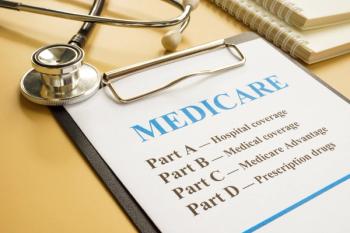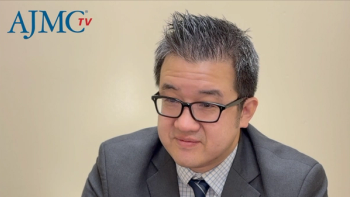
Patients With HFpEF May Benefit From Accelerated Cardiac Pacing
Key Takeaways
- Personalized accelerated pacing at 75 bpm showed a reduction in adverse clinical events in HFpEF patients compared to standard 60 bpm pacing.
- The per-protocol analysis indicated significantly fewer adverse events and longer event-free survival with accelerated pacing.
In an observational extension of the myPACE clinical trial, researchers found that a personalized accelerated pacing in patients with heart failure with preserved ejection fraction (HFpEF) and a preexisting physiological pacer saw a slower trend in adverse cardiac events and overall improved health status.
Increasing the beats per minute (bpm) of physiological pacemakers in patients with heart failure with preserved ejection fraction (HFpEF) slowed the development of adverse clinical events, according to a
The study was an observational extension of the myPACE clinical trial (myPACE; NCT04721314) that aimed to examine the effects of personalized accelerated pacing on quality of life, physical activity, and atrial fibrillation in patients with HFpEF. The standard pacing rate for a physiological pacer is 60 bpm; however, the myPACE trial personalized an accelerated pacing rate averaging 75 bpm.1
As of 2022, more than 64 million individuals worldwide have been diagnosed with heart failure (HF). HFpEF makes up nearly half of all HF cases, making it the most common HF phenotype. Patients with HFpEF may feel comfortable at rest, but their struggle occurs during exercise, given the profound limitations in their cardiac output reserve and blunted heart rate in response to exertion. While it is believed that cardiac pacing can alleviate symptoms of chronotropic incompetence, reducing cardiac output, specifically during exercise, little data support a pacemaker’s ability to facilitate rate-adaptive pacing in HFpEF patients.2
“In this 4-year observational follow-up analysis, analysis by [intention-to-treat] did not achieve statistical significance between study arms,” the study authors wrote. “However, continued use of personalized accelerated pacing appeared safe and, in PP analysis, was associated with a lower incidence of adverse clinical events compared with a conventional lower rate setting of 60 bpm.”
The 1-year randomized myPACE clinical trial included 107 patients who were enrolled between June 2019 and November 2020. Seven participants were lost to follow-up or withdrew before completing the 1-year follow-up. Of the remaining 100 myPACE trial participants, 48 were randomized into the personalized accelerated pacing (myPACE) at 75 bpm, and the other 52 were in usual care at 60 bpm. The mean age of patients was 74 years, and 48 (55%) of participants were male.
Accelerated Pacing Rate Effects
Before randomization, the mean bpm in the myPACE group and the usual care group was 67 bpm. Post-randomization, the myPACE group mean (SD) bpm was significantly higher than the usual care group (76 [5] bpm vs 65 [4] bpm; P < .001). In both the intention-to-treat (ITT) and the per-protocol (PP) analyses, a trend toward slower event accrual with the myPACE intervention was demonstrated, with only 15 adverse events when compared with the 33 in the usual care group. However, the difference did not reach statistical significance in the ITT analysis ([LWYY estimate, 0.48; 95% CI, 0.22-1.06; P = .07] vs [LWYY, 0.16; 95% CI, 0.04-0.67; P = .01]).
On the other hand, the PP analysis demonstrated a total of 31 adverse events in the usual care group compared with the 5 in the myPACE group, which included 11 heart failure hospitalizations in the usual care group and none in the myPACE group. Furthermore, the ITT analysis showed a nonsignificant trend to longer event-free survival in the myPACE group (HR, 0.63; 95% CI, 0.31-1.29; P = .20). Consistent with these findings, the PP analysis showed a significantly longer event-free survival in the myPACE group (HR, 0.30; 95% CI, 0.11-0.80; P = .02).
The myPACE trial provided evidence to support that personalized accelerated heart rate improved the overall health status, physical activity, and atrial fibrillation burden when compared with standard-of-care pacing at 1 year in patients with stage B and C HFpEF and preexisting cardiac physiological pacemakers. Concluding the 1-year follow-up, out of the 100 participants, 87 remained on their assigned heart rate setting (n = 39 in myPACE and 48 in usual care) over a median of 3.4 years and were included in the PP analysis. Those that continued with the personalized accelerated pacing were associated with more than a 50% reduction in adverse clinical events when compared with the usual care group.
“These findings suggest that sustained reductions in cardiac filling pressures, along with heart-rate-mediated beneficial cardiac remodeling, may offer a targeted therapeutic approach for HFpEF,” the study authors wrote.
However, a previous clinical trial, the Rate Adaptive Atrial Pacing for HFpEF (RAPID-HF; NCT02145351), found that rate adaptive pacing triggered by physical activity did not improve exercise capacity or health status in patients with HFpEF and chronotropic incompetence.1 Yet, the study authors emphasized that fundamental differences between the RAPID-HF and myPACE trials—including design, pacing strategy, duration of intervention, patient populations, device types, and end points—limit the ability to directly compare the results.
This study is limited by its observational, open-label design and the use of ITT and PP analyses, which introduce potential bias from unblinded participants and crossover decisions. ITT may mask true effects, while PP could overestimate benefits among those who continued therapy. The small sample size also limits generalizability, underscoring the need for larger trials.
“These findings should be considered nonconclusive and hypothesis-generating, thus warranting confirmation in larger, multicenter randomized clinical trials,” the study authors concluded.
References
1. Infeld M, Cyr J, Novelli AE, et al. Clinical outcomes with personalized accelerated physiologic pacing in heart failure with preserved ejection fraction: follow-up of the myPACE trial. JAMA Cardiol. Published online August 27, 2025. doi:10.1001/jamacardio
2. Oraii A, Chaumont C, Marchlinski FE, Hyman MC. Rate-adaptive pacing in heart failure with preserved ejection fraction: too much of a good thing? Heart Rhythm O2. 2024; 5(5):334-337. doi:10.1016/j.hroo.2024.03.010
Newsletter
Stay ahead of policy, cost, and value—subscribe to AJMC for expert insights at the intersection of clinical care and health economics.







































